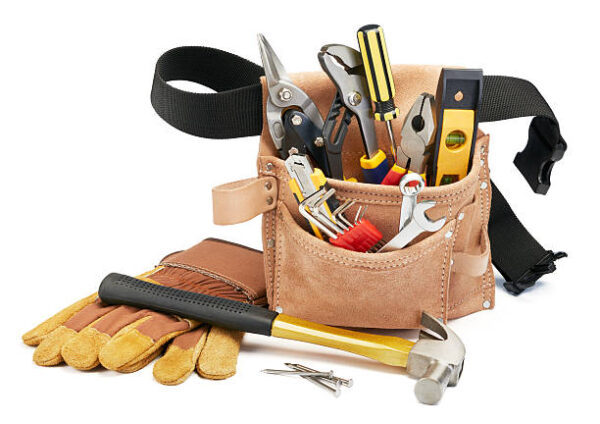With the plethora of tool belts available nowadays, picking the right one can get confusing. To help you with that, this article will be a tool belt buying guide.
Durability
A tool belt must be durable. It’s here where the quality of the material really matters. Some of the best tool belts are made of leather. When properly stitched or riveted with strong fasteners, these materials can support the weight of numerous tools and endure regular use.
Size
The proper fit of the tool belt should be one of the primary concerns. If you don’t plan on wearing the belt at the natural waistline, then don’t use your waist measurement. For most people, the tool belt is typically worn at a lower waist level. Take a measurement around your hips or in the space between your waist and hips if that’s where you intend to hang the tool belt.
Weight
The importance of a well-balanced tool belt is an often-overlooked but crucial detail. It’s best that you find a tool belt with a uniform distribution of loops, pouches, and pockets. The bulky or heavy tools should not be concentrated in one area. Back injuries and pain may result because of this.
Choose a tool belt with back support if you currently have back problems. Some tool belts are designed in a way that allows them to give additional back support.
Design
Choosing the right design layout largely depends on the nature of the project. Thus, the type of jobs you intend to undertake should guide your choice of a tool belt. This is because some types are basic and only offer loops and pockets for commonly used equipment like hammers and screwdrivers.
You may buy extra pouches or compartments for your tool belt. Small fasteners, screws, and nails can be stored in specialized pouches or nail bags. The organization can help improve your work efficiency.
Some Things To Keep In Mind When Shopping For A Tool Belt
1. Many independent contractors have constantly shifting workloads.
The tasks for the day may include roofing. It could be framing for tomorrow and molding installation for the day after that. If you have a similar case, consider prioritizing tool belts that could carry a wide range of tools.
2. The adaptability of tool belts makes them an excellent investment.
Some tool belts come with predetermined straps and pockets, making daily adjustments more difficult. On the other hand, a tool belt system provides you with slide-off tool holders, so you can swap out pouches as necessary and remove those that are no longer in use. With this type, switching out equipment is a breeze.
3. The kind of tools you’ll be using should also be taken into account.
Chisels and similar tools have pointed blades that can tear holes in your pants if you use them frequently. If you typically use such kinds of tools, tool belts with extra reinforcement may be an excellent choice.
4. Take into account your dominant hand, whether you are left-handed or right-handed.
This is because toolbelts are typically geared toward right-handed people. After all, they make up the majority of the population. Tool belts with detachable pouches might be the best option for lefties because they allow you to reorganise your gear to suit your dominant hand.
In Closing
Knowing how to choose your tool belt brings you closer to choosing the perfect one for your situation. Nevertheless, it’s hard to make a mistake by choosing any of the tool belts in the BUILDPRO Store as items are handpicked to feature the best craftsmanship and quality materials. Invest in quality today!

